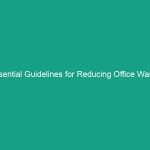Introduction
In the construction industry, safety is paramount. The Health, Safety, and Environment (HSE) framework encompasses various aspects of Workplace Safety, focusing on minimizing risks and promoting health and well-being among workers. One critical area that often goes overlooked is the management of noise levels on construction sites, which can lead to significant hearing impairment over time. Therefore, understanding Noise and Hearing Protection in Construction is essential for safeguarding workers’ health and ensuring compliance with regulatory Standards.
Noise-induced hearing loss is a preventable condition, yet it remains one of the most common occupational Hazards in construction. With heavy machinery, power tools, and various construction activities generating excessive noise, workers are often exposed to sound levels that exceed safe limits. This article aims to provide an in-depth exploration of the importance of noise and hearing protection in the construction industry, covering regulatory frameworks, best practices, practical tips, and real-world case studies.
Regulatory Frameworks for Noise Management
The first step in understanding noise and hearing protection in construction is to be aware of the regulatory frameworks that govern Workplace Safety. Various organizations set standards and guidelines to protect workers from hazardous noise exposure.
Occupational Safety and Health Administration (OSHA)
In the United States, the Occupational Safety and Health Administration (osha) plays a crucial role in regulating Workplace Safety, including noise exposure. OSHA’s permissible noise exposure limit is set at 90 decibels (dB) for an 8-hour workday. If workers are exposed to noise levels exceeding this limit, employers are required to implement a hearing conservation program.
Hearing Conservation Programs
These programs must include several key components:
- Noise Monitoring: Regular assessments of noise levels on construction sites to identify areas of concern.
- Employee Training: Education on the risks of noise exposure and the proper use of hearing protection devices.
- Hearing Tests: Baseline and periodic audiometric testing to monitor workers’ hearing health.
- Provision of Hearing Protection: Supply appropriate hearing protection devices that meet OSHA standards.
National Institute for Occupational Safety and Health (NIOSH)
NIOSH also provides guidelines and recommendations for noise exposure in the workplace. They advocate for a more stringent action level of 85 dB, emphasizing the importance of reducing noise at the source whenever possible. This includes implementing engineering controls, administrative controls, and Personal Protective Equipment (PPE) to minimize exposure.
Best Practices for Noise and Hearing Protection
Implementing Best Practices for noise and hearing protection is crucial in creating a safer work environment in construction. Here are some key strategies that employers and workers should adopt:
Conducting Noise Assessments
Regular noise assessments help identify high-noise areas within the construction site. Employers should utilize sound level meters to measure noise levels and determine which areas require immediate action. This proactive approach allows for timely implementation of Control Measures.
Engineering Controls
One of the most effective ways to manage noise is through engineering controls, which aim to reduce noise at the source. Examples include:
- Using quieter machinery and tools.
- Installing noise barriers or enclosures around loud equipment.
- Regularly maintaining equipment to ensure it operates efficiently and quietly.
Administrative Controls
Administrative controls involve changes in work practices to reduce exposure to noise. These may include:
- Limiting the time workers spend in high-noise areas.
- Implementing rotation schedules to minimize prolonged exposure.
- Planning work activities to minimize overlapping noisy operations.
Personal Protective Equipment (PPE)
Providing appropriate Personal Protective Equipment is essential for protecting workers from noise exposure. Hearing protection devices, such as earplugs and earmuffs, should be made available and properly fitted to ensure maximum effectiveness. Employers must also provide training on how to use and maintain these devices correctly.
Training and Awareness
Education plays a vital role in fostering a culture of safety. Regular training sessions should be conducted to inform workers about the risks associated with noise exposure, the importance of using hearing protection, and the proper use of equipment. Encouraging workers to speak up about noise concerns can also help identify potential Hazards early.
Case Studies: Successful Noise Management in Construction
Understanding the real-world implications of noise and hearing protection can be illustrated through case studies. Here are a few examples of construction companies that successfully implemented noise management strategies:
Case Study 1: XYZ Construction
XYZ Construction, a mid-sized company specializing in commercial building projects, faced challenges with high noise levels on-site. After conducting a comprehensive noise assessment, the company identified several areas where noise levels exceeded 90 dB. In response, they implemented engineering controls by purchasing quieter machinery and installing noise barriers around loud equipment. They also established a hearing conservation program, providing regular training and hearing tests for employees. As a result, the company saw a significant decrease in noise-related incidents and improved worker satisfaction.
Case Study 2: ABC Builders
ABC Builders, a large construction firm, recognized the need for better noise management after a few workers reported hearing loss. They took proactive steps by conducting a thorough noise audit and implementing administrative controls. By rotating workers through quieter tasks and scheduling noisy operations during off-peak hours, they successfully reduced average exposure levels. Additionally, they invested in high-quality hearing protection and ensured that all workers were trained on its use. Within a year, ABC Builders noted a marked improvement in employee health and morale.
Challenges in Implementing Noise and Hearing Protection
Despite the clear Benefits of noise and hearing protection in construction, several challenges can hinder effective implementation. Understanding these challenges is crucial for developing strategies to overcome them.
Cost Considerations
One of the primary challenges is the cost associated with implementing effective noise management strategies. Investing in quieter equipment, noise barriers, and hearing protection devices can be significant. However, companies should view these costs as an investment in employee health and productivity rather than an expense. The long-term savings associated with reduced medical costs and improved worker retention can far outweigh the initial investments.
Worker Compliance and Engagement
Another challenge is ensuring worker compliance with noise protection protocols. Some workers may resist using hearing protection due to discomfort or lack of awareness regarding its importance. To combat this, employers must foster an environment of safety and encourage open communication. Engaging workers in the decision-making process when selecting hearing protection can lead to better acceptance and adherence.
Dynamic Work Environments
Construction sites are often dynamic, with changing conditions and noise sources. This unpredictability can make it challenging to maintain consistent noise management practices. Employers must remain vigilant and adaptable, regularly reassessing noise levels and implementing Control Measures as necessary.
Future Trends in Noise and Hearing Protection
As the construction industry continues to evolve, so too do the approaches to noise and hearing protection. Several trends are emerging that can shape the future of noise management:
Technological Advancements
With advancements in technology, the development of quieter construction equipment and tools is becoming increasingly feasible. Innovations such as electric-powered machinery and advanced sound-dampening technologies can significantly reduce noise levels on-site. Additionally, wearable technology that monitors noise exposure could provide real-time feedback to workers, enhancing awareness and compliance.
Sustainable Practices
As Sustainability becomes a focal point in construction, noise management will likely align with Eco-friendly Practices. Sustainable construction methods often emphasize minimizing environmental impact, which includes reducing noise pollution. As companies adopt green building certifications, integrating noise and hearing protection into their sustainability strategies will become more prevalent.
Enhanced Regulatory Standards
Regulatory bodies may continue to tighten noise exposure limits and increase the emphasis on hearing conservation programs. Companies must stay informed about any changes to Regulations and be proactive in adapting their practices accordingly. This will ensure compliance and contribute to a safer work environment.
Conclusion
In conclusion, the importance of Noise and Hearing Protection in Construction cannot be overstated. By understanding the regulatory frameworks, implementing Best Practices, and learning from successful case studies, construction companies can effectively manage noise exposure and protect their workers’ hearing health. Overcoming challenges and adapting to future trends will require commitment and collaboration from both employers and employees.
As we move forward, it’s essential to prioritize safety in the construction industry. By taking proactive steps to address noise and hearing protection, we can create a healthier, more productive work environment for all. If you’re involved in construction, consider reviewing your noise management strategies today and make the necessary changes to protect your most valuable asset—your workers.


